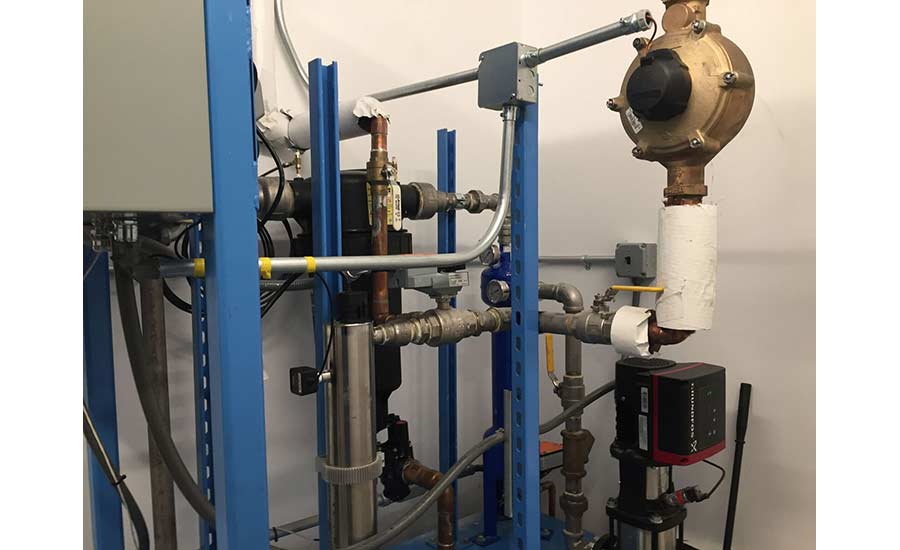In the summer of 2015, the New York-based HIGHMARK was tapped to install a rainwater harvesting system in Etsy’s new headquarters building in Brooklyn. Below is a Q & A session with HIGHMARK founders Richard Gerbe and Anthony Sannazzaro about the system, its benefits and how it was implemented.
When did you begin working on the project?
Sannazzaro: HIGHMARK was formally brought on board the project around mid-July 2015, but the project (had already) started. (HIGHMARK's) formal kick off of construction was July 21, 2015, and we closed the project out approximately a year later. The rainwater harvesting system was one of the last items to be commissioned because it relies on the other systems being completed, such as the plumbing and irrigation systems.
What makes the Etsy rainwater harvesting system so unique?
Sannazzaro: Most buildings in New York City implement a rainwater harvesting system because the New York City Department of Environmental Protection (DEP) requires a stormwater detention tank be installed in new buildings. However, the Etsy headquarters in Brooklyn was a retrofit of an existing building and it wasn’t required that a tank be installed. Etsy decided to install a rainwater retention tank and conduct water treatment purely for sustainability purposes. Additionally, Etsy partook in the Living Building Challenge, a top measure of sustainability, which required that all building materials be environmentally friendly and have low levels of volatile organic compounds (VOCs), which we fulfilled for the rainwater harvesting system. What’s more, Etsy opted to use a customized, pre-built water treatment system that was constructed, wired and programmed in a factory, thus maximizing efficiencies but preventing contractors on the ground from guaranteeing proper functionality. HIGHMARK took on the responsibility of ensuring that the whole system worked together seamlessly and met the Living Building Challenge requirements.
What are the benefits of the system? How will it affect Etsy on a day-to-say basis?
Sannazzaro: Etsy utilizes the system to irrigate plants in and around their office space. This will save tens of thousands of gallons of fresh water per year by capturing rainwater that would normally be dumped down the drain. The water is also used in janitorial closets.
Gerbe: Etsy saves a considerable amount of water, which reinforces their dedication to sustainability. They track and trend how much water they are reusing and how much comes from the tap in order to do their irrigation so they have direct visibility into the value provided by the rainwater harvesting system. And the system runs automatically without their intervention so they don’t need to manually control anything unless so desired.
What challenges did HIGHMARK face when implementing the system?
Gerbe: The main challenge of rainwater harvesting systems is that they are typically field-built systems that require a lot of coordination between trades. By building the system in a factory and shipping it to the site, the coordination is drastically reduced. HIGHMARK also developed the system to be relatively maintenance-free. The components are primarily self-cleaning and only require quarterly-to-yearly inspections, which can typically be completed in less than a day. Additionally the system was integrated into an internal network that allows Etsy personnel to monitor the system and ensure that it’s always operating effectively. Therefore, we don’t expect Etsy to face any future challenges with the maintenance and operation of the system.
HIGHMARK is currently in talks to install the system in other buildings throughout New York City. You can read more about the process at http://www.highmark-ny.com/ .


Post a comment to this article
Report Abusive Comment